At an Irish Farmers’ Association (IFA) climate event in late January, chair of the Climate Change Advisory Council John Fitzgerald quoted research from the Economic and Social Research Institute (ESRI) that said commuters from rural areas would be most adversely affected by a carbon tax and that they needed to change their mode of transport, ie to an electric car.
I am a commuter, my carbon footprint is large and I would like to change that while maintaining a healthy varied diet and the odd flight. So what can I do?
Several people have questioned the logic of Volkswagen giving me (a long-distance commuter from Kilkenny to Dublin) an electric car on trial. So to answer that question – they didn’t.
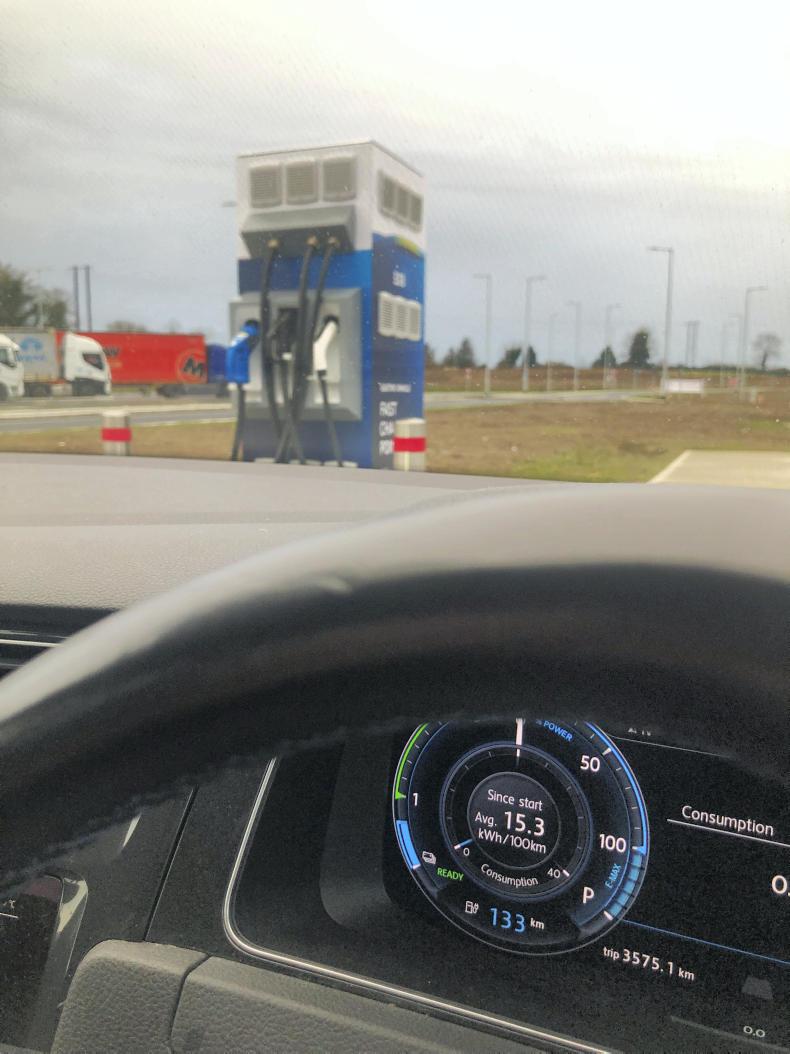
The opportunity to explore the electric car option came through 3cea, a non-profit, independent energy agency providing sustainable energy services in Wexford, Kilkenny and Carlow. So what was the motivation of a company that wants to “lead the way towards a more sustainable future by reducing our carbon dioxide emissions” to give this car to someone who travels as far as me every day? The answer to that is they also have feasibility concerns, which were called out in their newsletter.
“3cea’s new Volkswagen E-Golf has a 284km range when fully charged and will save us up to €10,000 a year. We have already noticed the lower running costs. But it comes with its challenges. One major challenge is battery charging points (currently in short supply) and range worries for longer journeys. How far can you go between charges? Charging an electric car isn’t quite as simple and we really have to plan our trips ahead.”
Despite these warnings, I took 3cea up on their offer, as with all the issues of broadband and housing, commuters like me are the ones that need the electric car to work. Here is my experience:
My worst day
I picked up the car fully charged from the 3cea offices in Kilkenny and I set off to Dublin 123km away. As I was warned not to use the heater as this would decrease the range considerably, I turned it off, when I started the car, and watched as the range jumped from 218km to 278km.
Although I would have made it to the office if I was more familiar with the car, I stopped twice due to range anxiety, firstly in the new Circle K garage at Kilcullen. 3cea had given me a card to pay for the fast chargers so I was confident that a quick 25-minute recharge would get me back on the road. But the charger didn’t work. I called the number on the side of the charger to get help from the ESB.
By a fair margin, this was the worst customer service experience I have had in a while. The representative asked me: “Are you sure it is one of our machines?”. I indignantly informed him that I called the number of the side of the machine and got him – so what did he think? Because I was not the account holder, he told me he could do nothing for me. I called 3cea and they advised trying the charger in Tesco in Naas. That wasn’t working either. I was at this stage very late for my first appointment of the day. I made a call – the first of my apologies for lateness during the week – and chugged nervously onto the office. I plugged it in. This involved getting a non-electric car to move from the parking space in front of the plug. This being a regular plug, for my charging time of 11am to 5.30pm I only got recharged to 80km.
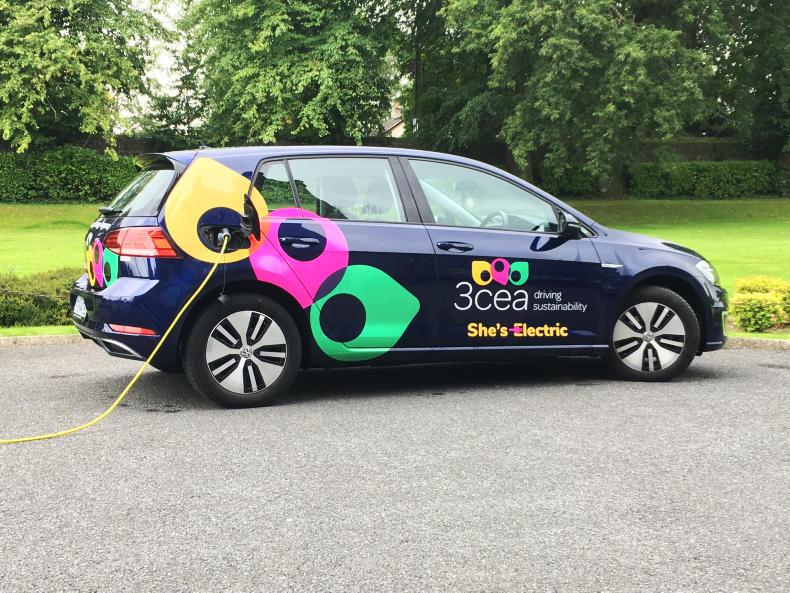
One of the biggest difficulties is the inadequacy of the charging point infrastructure.
This would not get me home so I went on the ESB app, which is very good, to find the nearest charger, which was in Newlands Cross. And it worked. I queued for 10 minutes and then 30 minutes later I was up to 268km on the clock and on the road home which was 139km. I had 50km left in the tank when I plugged into the house. Driving to the speed limit on the motorway consumes a lot of battery so I drove home at 90km/h. Not being able to do the speed limit does increase commuting time considerably. I was cold and glad to be home.
Gloves, hat and scarf
The overnight charge got me to a range of 268km. I was travelling to Mullingar for the National Dairy Conference, a route of 152km. Without the heater, I was dressed in full outdoor gear – hat, scarf, gloves and a hot water bottle in my lap. I had called the hotel (Mullingar Park Hotel) in advance to see if they had a charger, which they do. Success I thought.
However, as I could not drive to the speed limit, the journey, which is usually two hours, was closer to two-and-a-half. And another, “I’m sorry, I’m delayed” phone call.
At the break, I went to charge the car but it was a different machine so my card didn’t work. So I downloaded the app ‘Gocar’ and paid the money in the rain. I got a message on the app to say it had stopped 40 minutes later.
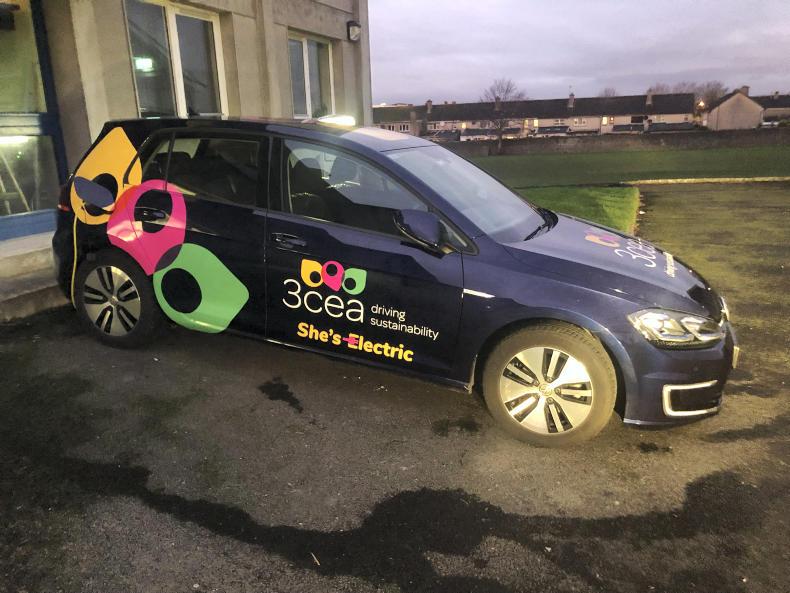
However, when I went out it had only charged to 168km. I didn’t have time to mess anymore with it so I parked it up, not to be in the way of someone else. After the conference I tried the machine again but it wouldn’t work at all. I reverted to my ESB app to find a fast charger. Kilbeggan was identified, which was not on my direct route home, but the best option. This worked fine and I was fully charged in 30 minutes. All this, however, added over an hour to my journey again. Got home and charged overnight.
Starting to get a cold
Although I was almost fully charged leaving the house, I was very conscious that a round trip without charging was not possible. I was going into Dublin city for an interview and I wanted to bring the car as this is where the electric car shines. However, I was concerned that we wouldn’t make it so I stopped in Kilcullen and fortunately the station that didn’t work on day one was fixed on day three.
City driving doesn’t consume battery like the motorway, so there was less range anxiety and it was a nice silent experience. However, the trip to town and back to the office and the absence of a charging point there meant that I had to recharge again on the way home. I was the guest speaker at our IFA branch that night so the third, “I’m sorry, I’m delayed” phone call occurred. As I was late, the speed limit was required and the battery was getting exhausted pretty quickly at that pace, but I made it.
It’s the weekend
The weekend arrived and the only place the electric car went on Saturday was down to my mother’s (500 metres). However, that is not to say it wasn’t needed.

The heating has to be turned off to increase the range of the car, which seriously raises the chill factor in winter. Dia McKeever, pictured above.
On Saturday, the diesel had to come out as we had a sick child that needed the CareDoc. If there was a trip to the hospital required, there would be no time for charging. On Sunday, I drove to Woodsgift in north Kilkenny for the coursing. The car was parked on the road for fear of not being able to get out of the field and blowing out the battery spinning the wheels. My small child sat in my father’s rental car delighted with the heater. I left home with an almost full charge of 266km and arrived home with 76km. The journey was 36km each way.
Work again and my nose is very red
I had one stop to do in Kilkenny on the way to Dublin and with that, I had to make my now-familiar stop in Kilcullen. One of the chargers was not working again, but fortunately the other was. That night I was staying in the Croke Park Hotel. The car informed me that they had a charger in the carpark of the hotel when I put the hotel address in the satnav, which was convenient.
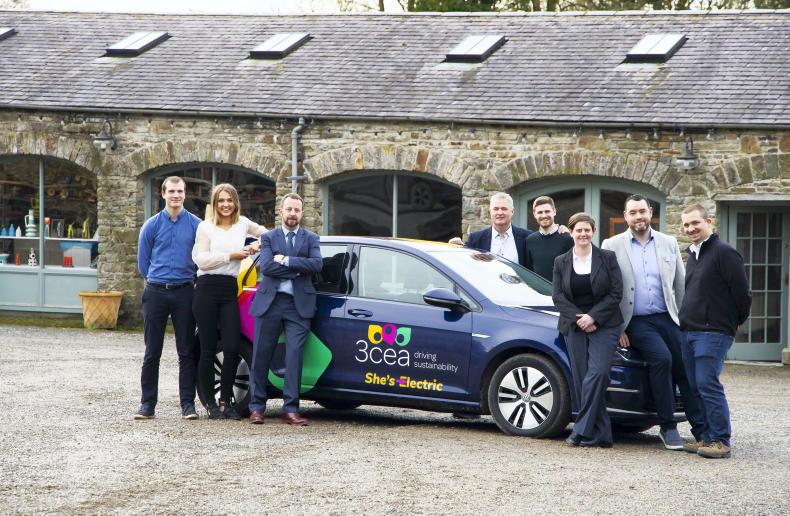
The 3Cea team with the Volkwagen E-Golf.
However, when I arrived a car was using it. I waited. Another car pulled in while I was reversing out of my spot to head for it. I waited.
The driver never re-appeared. I was already late for dinner with my friend, so I parked and left. In the morning, the same car was still there. He had not returned to move it to facilitate anyone else.
glad to get my diesel back
I returned the car on day seven. Although I loved the car itself – easy to drive, great Volkswagen internal systems and very comfortable – I was frozen solid for an entire week and it took the best part of two weeks to get rid of the cold. I was glad to see my diesel.
Aside from the environmental benefits of an electric car, there is the financial side. If you can find one to purchase that is within your price bracket, they do make financial sense. The average cost of my fast charges (ESB) over the course of the week was €5.72. These ranged from 35 to 42 minutes in length and consumed between 17 and 22 kWh of power
At home we have night rate electricity so the full overnight charge worked out at approximately:
€2.21 (night) + €2.97 (day) = €5.18 + 0.6993 (VAT) = €5.88 / full charge overnight.
There is also a money-saving impact in that there is provision in the Finance Act 2018 that a new electric car is fully exempt from benefit-in-kind (BIK) where the original market value (OMV) of the vehicle does not exceed €50,000. Where the OMV of the electric vehicle exceeds €50,000, a partial exemption is available.
See www.revenue.ie
The ESB has 1,100 charging points across the country including 70 “fast chargers”. However, there are not enough.
A complaint of many drivers is that although people have invested in electric cars, the infrastructure to support this choice has not kept up.
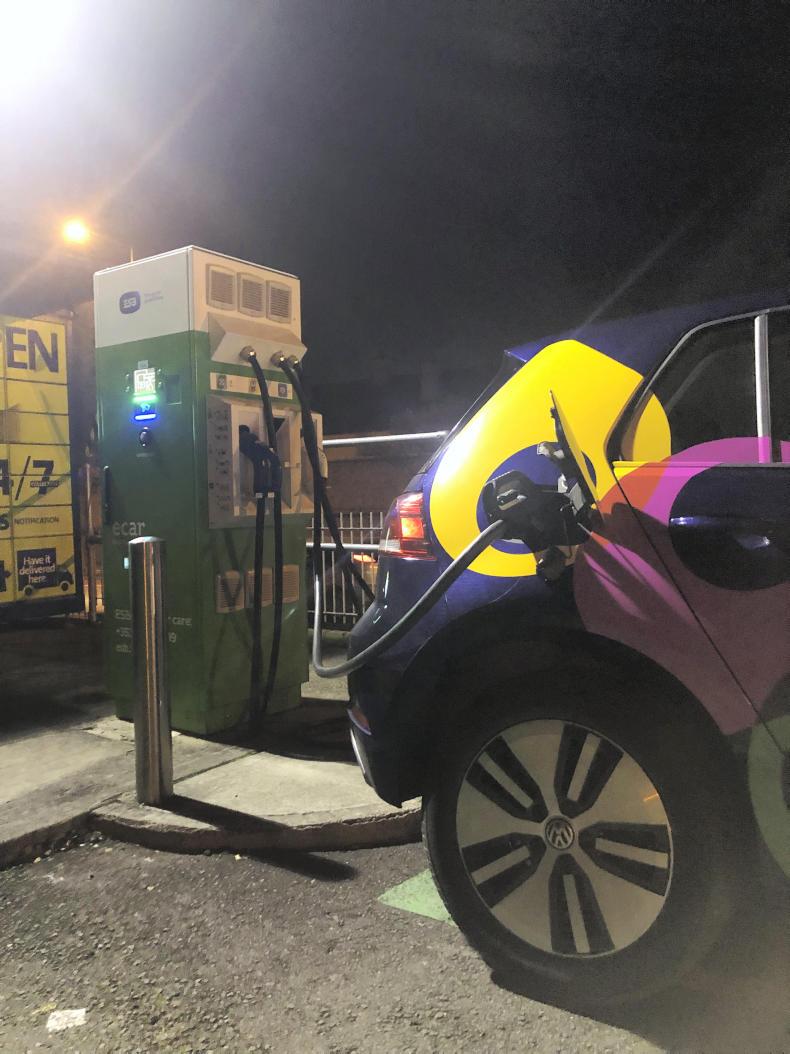
Etiquette surrounding the electric car chargers was less than desirable.
A household plug charge can take up to 12 hours so investment in a charger at home is necessary. Between chargers not working and poor etiquette around the use of the chargers that there are, the experience can be frustrating.
For a commuter like me, there are electric vehicles with a higher range which would make life easier. But this is a motoring lifestyle that requires considerable planning ahead. A different mindset is required and additional time to travel.
Saying that, without heat in winter, it really is not a feasible option, particularly with young children who can’t understand why they have to be dressed up like a skier in the car.
At an Irish Farmers’ Association (IFA) climate event in late January, chair of the Climate Change Advisory Council John Fitzgerald quoted research from the Economic and Social Research Institute (ESRI) that said commuters from rural areas would be most adversely affected by a carbon tax and that they needed to change their mode of transport, ie to an electric car.
I am a commuter, my carbon footprint is large and I would like to change that while maintaining a healthy varied diet and the odd flight. So what can I do?
Several people have questioned the logic of Volkswagen giving me (a long-distance commuter from Kilkenny to Dublin) an electric car on trial. So to answer that question – they didn’t.

The opportunity to explore the electric car option came through 3cea, a non-profit, independent energy agency providing sustainable energy services in Wexford, Kilkenny and Carlow. So what was the motivation of a company that wants to “lead the way towards a more sustainable future by reducing our carbon dioxide emissions” to give this car to someone who travels as far as me every day? The answer to that is they also have feasibility concerns, which were called out in their newsletter.
“3cea’s new Volkswagen E-Golf has a 284km range when fully charged and will save us up to €10,000 a year. We have already noticed the lower running costs. But it comes with its challenges. One major challenge is battery charging points (currently in short supply) and range worries for longer journeys. How far can you go between charges? Charging an electric car isn’t quite as simple and we really have to plan our trips ahead.”
Despite these warnings, I took 3cea up on their offer, as with all the issues of broadband and housing, commuters like me are the ones that need the electric car to work. Here is my experience:
My worst day
I picked up the car fully charged from the 3cea offices in Kilkenny and I set off to Dublin 123km away. As I was warned not to use the heater as this would decrease the range considerably, I turned it off, when I started the car, and watched as the range jumped from 218km to 278km.
Although I would have made it to the office if I was more familiar with the car, I stopped twice due to range anxiety, firstly in the new Circle K garage at Kilcullen. 3cea had given me a card to pay for the fast chargers so I was confident that a quick 25-minute recharge would get me back on the road. But the charger didn’t work. I called the number on the side of the charger to get help from the ESB.
By a fair margin, this was the worst customer service experience I have had in a while. The representative asked me: “Are you sure it is one of our machines?”. I indignantly informed him that I called the number of the side of the machine and got him – so what did he think? Because I was not the account holder, he told me he could do nothing for me. I called 3cea and they advised trying the charger in Tesco in Naas. That wasn’t working either. I was at this stage very late for my first appointment of the day. I made a call – the first of my apologies for lateness during the week – and chugged nervously onto the office. I plugged it in. This involved getting a non-electric car to move from the parking space in front of the plug. This being a regular plug, for my charging time of 11am to 5.30pm I only got recharged to 80km.

One of the biggest difficulties is the inadequacy of the charging point infrastructure.
This would not get me home so I went on the ESB app, which is very good, to find the nearest charger, which was in Newlands Cross. And it worked. I queued for 10 minutes and then 30 minutes later I was up to 268km on the clock and on the road home which was 139km. I had 50km left in the tank when I plugged into the house. Driving to the speed limit on the motorway consumes a lot of battery so I drove home at 90km/h. Not being able to do the speed limit does increase commuting time considerably. I was cold and glad to be home.
Gloves, hat and scarf
The overnight charge got me to a range of 268km. I was travelling to Mullingar for the National Dairy Conference, a route of 152km. Without the heater, I was dressed in full outdoor gear – hat, scarf, gloves and a hot water bottle in my lap. I had called the hotel (Mullingar Park Hotel) in advance to see if they had a charger, which they do. Success I thought.
However, as I could not drive to the speed limit, the journey, which is usually two hours, was closer to two-and-a-half. And another, “I’m sorry, I’m delayed” phone call.
At the break, I went to charge the car but it was a different machine so my card didn’t work. So I downloaded the app ‘Gocar’ and paid the money in the rain. I got a message on the app to say it had stopped 40 minutes later.

However, when I went out it had only charged to 168km. I didn’t have time to mess anymore with it so I parked it up, not to be in the way of someone else. After the conference I tried the machine again but it wouldn’t work at all. I reverted to my ESB app to find a fast charger. Kilbeggan was identified, which was not on my direct route home, but the best option. This worked fine and I was fully charged in 30 minutes. All this, however, added over an hour to my journey again. Got home and charged overnight.
Starting to get a cold
Although I was almost fully charged leaving the house, I was very conscious that a round trip without charging was not possible. I was going into Dublin city for an interview and I wanted to bring the car as this is where the electric car shines. However, I was concerned that we wouldn’t make it so I stopped in Kilcullen and fortunately the station that didn’t work on day one was fixed on day three.
City driving doesn’t consume battery like the motorway, so there was less range anxiety and it was a nice silent experience. However, the trip to town and back to the office and the absence of a charging point there meant that I had to recharge again on the way home. I was the guest speaker at our IFA branch that night so the third, “I’m sorry, I’m delayed” phone call occurred. As I was late, the speed limit was required and the battery was getting exhausted pretty quickly at that pace, but I made it.
It’s the weekend
The weekend arrived and the only place the electric car went on Saturday was down to my mother’s (500 metres). However, that is not to say it wasn’t needed.

The heating has to be turned off to increase the range of the car, which seriously raises the chill factor in winter. Dia McKeever, pictured above.
On Saturday, the diesel had to come out as we had a sick child that needed the CareDoc. If there was a trip to the hospital required, there would be no time for charging. On Sunday, I drove to Woodsgift in north Kilkenny for the coursing. The car was parked on the road for fear of not being able to get out of the field and blowing out the battery spinning the wheels. My small child sat in my father’s rental car delighted with the heater. I left home with an almost full charge of 266km and arrived home with 76km. The journey was 36km each way.
Work again and my nose is very red
I had one stop to do in Kilkenny on the way to Dublin and with that, I had to make my now-familiar stop in Kilcullen. One of the chargers was not working again, but fortunately the other was. That night I was staying in the Croke Park Hotel. The car informed me that they had a charger in the carpark of the hotel when I put the hotel address in the satnav, which was convenient.

The 3Cea team with the Volkwagen E-Golf.
However, when I arrived a car was using it. I waited. Another car pulled in while I was reversing out of my spot to head for it. I waited.
The driver never re-appeared. I was already late for dinner with my friend, so I parked and left. In the morning, the same car was still there. He had not returned to move it to facilitate anyone else.
glad to get my diesel back
I returned the car on day seven. Although I loved the car itself – easy to drive, great Volkswagen internal systems and very comfortable – I was frozen solid for an entire week and it took the best part of two weeks to get rid of the cold. I was glad to see my diesel.
Aside from the environmental benefits of an electric car, there is the financial side. If you can find one to purchase that is within your price bracket, they do make financial sense. The average cost of my fast charges (ESB) over the course of the week was €5.72. These ranged from 35 to 42 minutes in length and consumed between 17 and 22 kWh of power
At home we have night rate electricity so the full overnight charge worked out at approximately:
€2.21 (night) + €2.97 (day) = €5.18 + 0.6993 (VAT) = €5.88 / full charge overnight.
There is also a money-saving impact in that there is provision in the Finance Act 2018 that a new electric car is fully exempt from benefit-in-kind (BIK) where the original market value (OMV) of the vehicle does not exceed €50,000. Where the OMV of the electric vehicle exceeds €50,000, a partial exemption is available.
See www.revenue.ie
The ESB has 1,100 charging points across the country including 70 “fast chargers”. However, there are not enough.
A complaint of many drivers is that although people have invested in electric cars, the infrastructure to support this choice has not kept up.

Etiquette surrounding the electric car chargers was less than desirable.
A household plug charge can take up to 12 hours so investment in a charger at home is necessary. Between chargers not working and poor etiquette around the use of the chargers that there are, the experience can be frustrating.
For a commuter like me, there are electric vehicles with a higher range which would make life easier. But this is a motoring lifestyle that requires considerable planning ahead. A different mindset is required and additional time to travel.
Saying that, without heat in winter, it really is not a feasible option, particularly with young children who can’t understand why they have to be dressed up like a skier in the car.










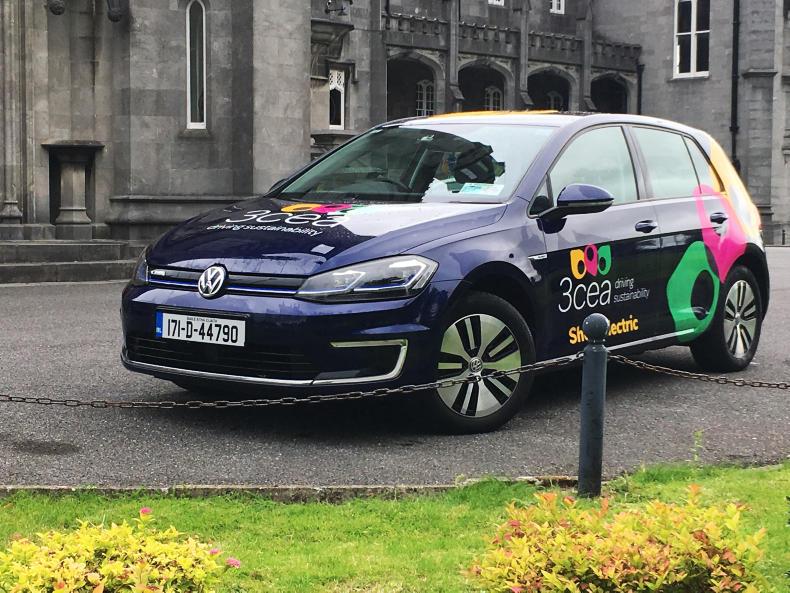


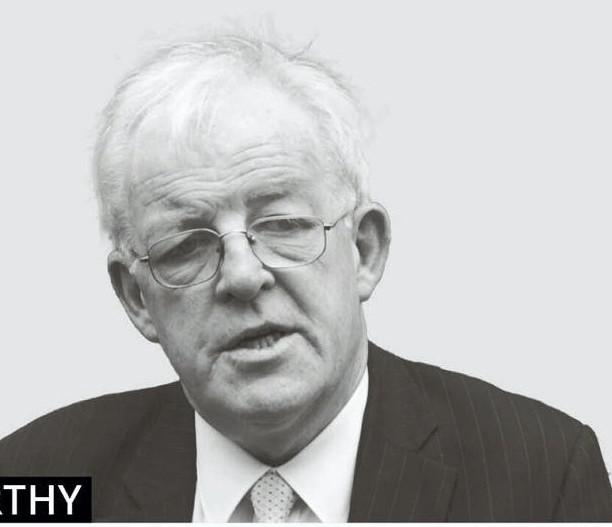
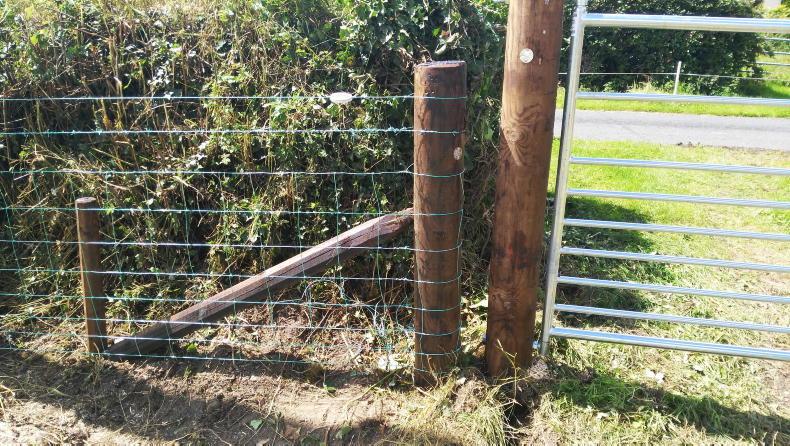
SHARING OPTIONS